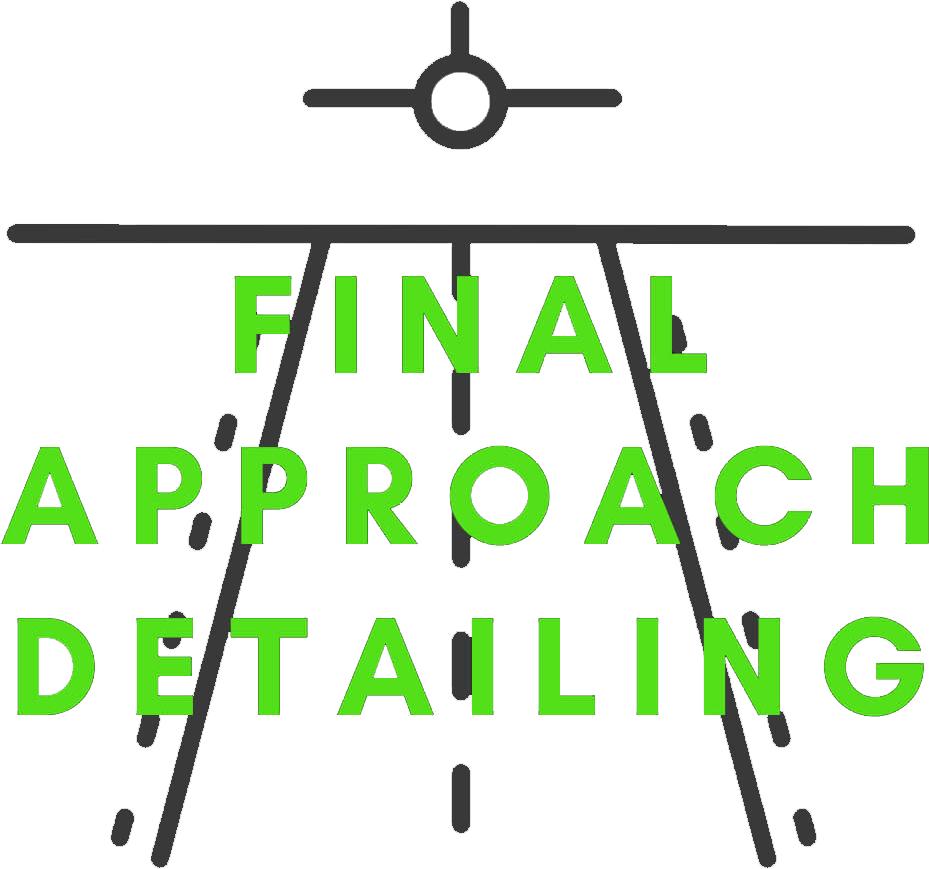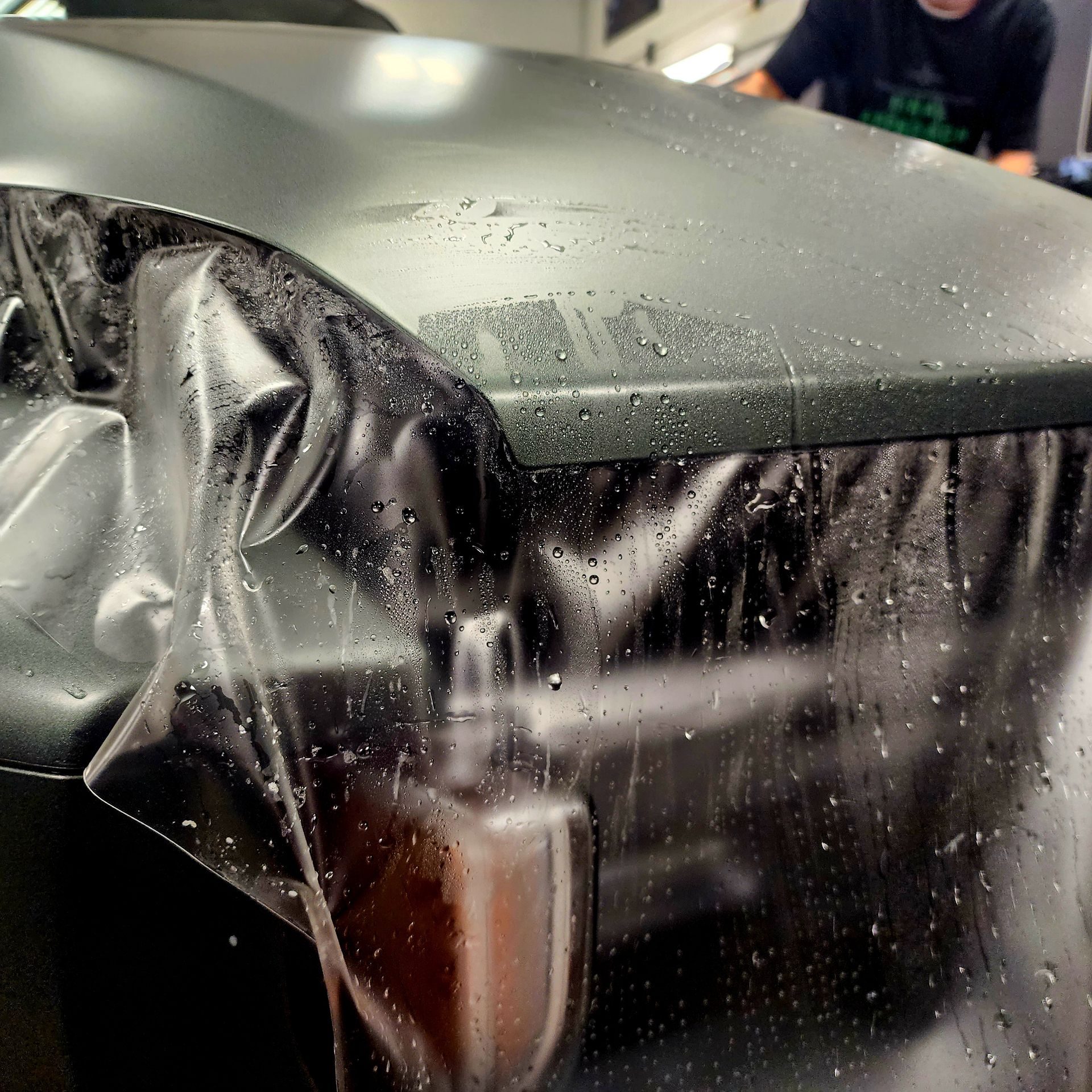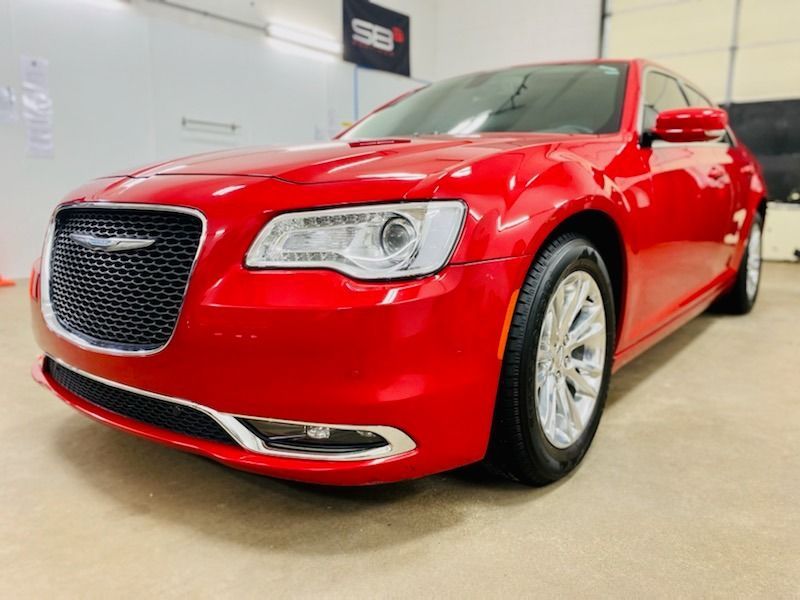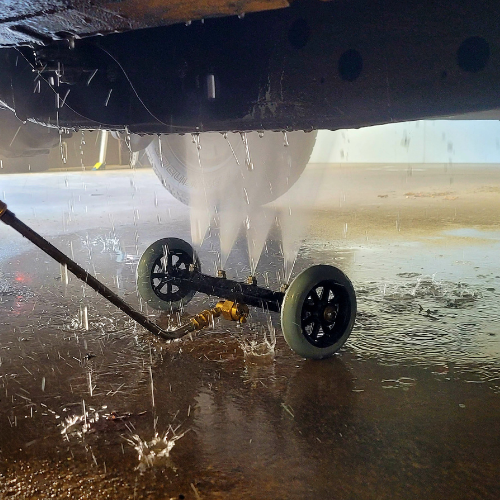Can You Ceramic Coat Paint Protection Film?
Imagine shielding your car's appearance from the woes of weather damage, minor scratches, and road grime, only to enhance it with a superior, glossy finish. This is no longer just a dream. The fusion of Paint Protection Film (PPF) and Ceramic Coating allows for durable protection with an aesthetic-enhancing sheen. Let's deep dive into the possibilities and benefits of ceramic coating applied over Paint Protection Film - an automotive revolution you can't afford to miss.

Understanding Ceramic Coating
Before exploring the possibilities and benefits of ceramic coating on paint protection film, it is important to have a thorough understanding of what ceramic coating actually is. Ceramic coating, also known as nano-ceramic coating or glass coating, is a liquid polymer that is applied to the exterior surface of vehicles to provide long-lasting protection.
Ceramic coatings are based on nanotechnology, which allows them to bond chemically with the surface of the vehicle's paintwork. This creates a protective layer that enhances the car's appearance while providing advanced resistance against environmental and human-made contaminants. The result is a glossy finish that not only makes the vehicle look visually appealing but also facilitates easier cleaning and maintenance.
Ceramic coatings offer several advantages over traditional wax or sealant-based products. First and foremost, they provide significantly enhanced durability. Whereas traditional waxes and sealants may last for a few months at best, ceramic coatings can provide protection for years when properly maintained.
Imagine you are driving your car through various weather conditions, from scorching summers to harsh winters with salt-covered roads. A high-quality ceramic coating would act as a shield against UV rays, acid rain, bird droppings, tree sap, insect splatters, and other contaminants that can potentially damage the paintwork of your vehicle. It would make cleaning easier and prevent unwanted swirl marks from appearing on the surface.
Furthermore, ceramic coatings offer excellent hydrophobic properties, meaning that they repel water and other liquids effectively. This not only helps in maintaining a cleaner-
looking surface but also reduces the chances of water spots or mineral deposits forming on the paintwork.
Additionally, ceramic coatings can provide increased resistance to oxidation and fading caused by prolonged exposure to sunlight. UV rays can be particularly damaging to your vehicle's paintwork over time, resulting in dullness and discoloration. However, with a quality ceramic coating, these harmful effects can be minimized, keeping your vehicle looking vibrant and glossy for longer.
Advantages of Ceramic Coating on Paint Protection Film
Paint protection film, also known as PPF or clear bra, is a transparent urethane film that is applied to vulnerable areas of a vehicle's exterior to protect them from rock chips, light scratches, and other forms of damage. When combined with a ceramic coating, paint protection film becomes an even more effective safeguard for your vehicle's paintwork.
One of the key advantages of applying ceramic coating on top of paint protection film is the enhanced self-cleaning effect. The hydrophobic properties of ceramic coatings prevent dirt, dust, and other contaminants from adhering firmly to the surface. This makes cleaning significantly easier and keeps the film looking transparent and unblemished.
Imagine driving through muddy roads or during inclement weather conditions. By having a ceramic coating layered on top of your paint protection film, you can rest assured that debris and grime won't stick as strongly to the surface. A simple rinse or light wash will typically be sufficient to remove most dirt particles, leaving your vehicle looking fresh and clean.
Additionally, ceramic coatings reinforce the durability of the paint protection film itself. While PPF provides excellent resistance against physical damage like rock chips or light scratches, it may still be susceptible to fading or discoloration over time due to UV exposure. By applying a ceramic coating specifically designed for paint protection film, you can add an extra layer of UV resistance. This not only helps maintain the film's transparency but also ensures long-lasting protection against the detrimental effects of the sun.
Furthermore, ceramic coatings can add aesthetic appeal to paint protection films. The gloss and depth-enhancing properties of the coating enhance the overall appearance of your vehicle, making it look even more refined and showroom-worthy.
The advantages of combining ceramic coating with paint protection film are clear - from enhanced self-cleaning properties to increased durability and aesthetic appeal. These benefits make it a worthwhile investment for those looking to protect and preserve their vehicle's exterior.
Resilience to High Heat and Humidity
When it comes to protecting your vehicle's paint, one of the major concerns is its ability to withstand high heat and humidity. This is where ceramic coating for paint protection film (PPF) truly shines. Ceramic coatings are known for their exceptional resilience, even in extreme weather conditions.
High temperatures can have detrimental effects on traditional paint protection products, causing them to deteriorate or lose their protective properties over time. However, ceramic coatings are specifically formulated to endure these challenges. The advanced technology used in ceramic coatings allows them to create a strong, durable barrier that resists damage from UV rays, heat, and humidity.
Imagine living in a region with scorching hot summers and high humidity levels. Without proper protection, your vehicle's paint could easily fade, crack, or peel under such harsh conditions. However, by applying a ceramic coating on top of your paint protection film (PPF), you enhance its ability to withstand heat and humidity.
Ceramic coatings act as a shield against UV radiation, preventing the paint from oxidizing and losing its color. Additionally, they provide a high level of insulation that helps minimize heat transfer between the exterior environment and the vehicle's surface. By reducing heat absorption, ceramic coatings help keep the paint cooler and prevent warping or distortion caused by prolonged exposure to high temperatures.
Reflection Enhancement
One of the key aesthetic advantages of ceramic coatings for PPF is their ability to enhance the overall reflection and glossiness of the protected surface. When your vehicle is coated with ceramic technology, it develops an eye-catching, mirror-like finish that turns heads wherever you go.
The secret behind this remarkable reflection enhancement lies in the unique chemical composition of ceramic coatings. These coatings consist of tiny particles that form a transparent, nanoscale bond with the surface they are applied to. This bond helps reflect light more evenly, resulting in a heightened shine and increased depth of color.
When sunlight hits a vehicle protected by a ceramic coating, it bounces off the surface with enhanced intensity and clarity. The smooth and hydrophobic nature of ceramic coatings also prevents water droplets from adhering to the surface, reducing the likelihood of water spots, which can diminish the overall reflection and glossiness.
Imagine driving your newly coated vehicle on a sunny day. The sunlight naturally illuminates your car's sleek lines, but with the addition of a ceramic coating on top of your paint protection film (PPF), the impact is taken to another level. The enhanced reflection not only makes your vehicle look stunning but also emphasizes its elegant curves and contours.
This level of reflection enhancement goes beyond regular wax or sealant products. With ceramic coating technology, you can achieve an unparalleled level of glossiness and visual appeal for your vehicle's paint protection film.
Anti-Corrosion Properties
One of the significant benefits of ceramic coating on paint protection film is its impressive anti-corrosion properties. The combination of these two protective layers creates a robust shield against various environmental factors and contaminants that can harm the vehicle's paintwork.
Each day, our vehicles face an onslaught of corrosive elements such as UV rays, acid rain, bird droppings, tree sap, and road salt. Over time, these substances can eat away at the clear coat and paint surface, leading to unsightly blemishes and even structural damage to the vehicle. However, when a high-quality ceramic coating is applied on top of paint protection film, it forms an additional layer of defense against such corrosive agents.
For instance, consider a scenario where you are driving your car and accidentally park under a tree. Unbeknownst to you, the tree releases sap that lands on your vehicle's hood. Without protection, this sticky substance can seep into the pre-existing paint protection film and potentially corrode the underlying paintwork. But with a ceramic coating acting as an extra barrier, the sap is much less likely to penetrate and cause damage.
Furthermore, ceramic coatings are known for their hydrophobic properties, which repel water and moisture and could lead to corrosion over time. By preventing water from lingering on the surface and forming rust-promoting microscopic pockets, the coating helps maintain the integrity and longevity of both the paint protection film and the underlying vehicle's paintwork.
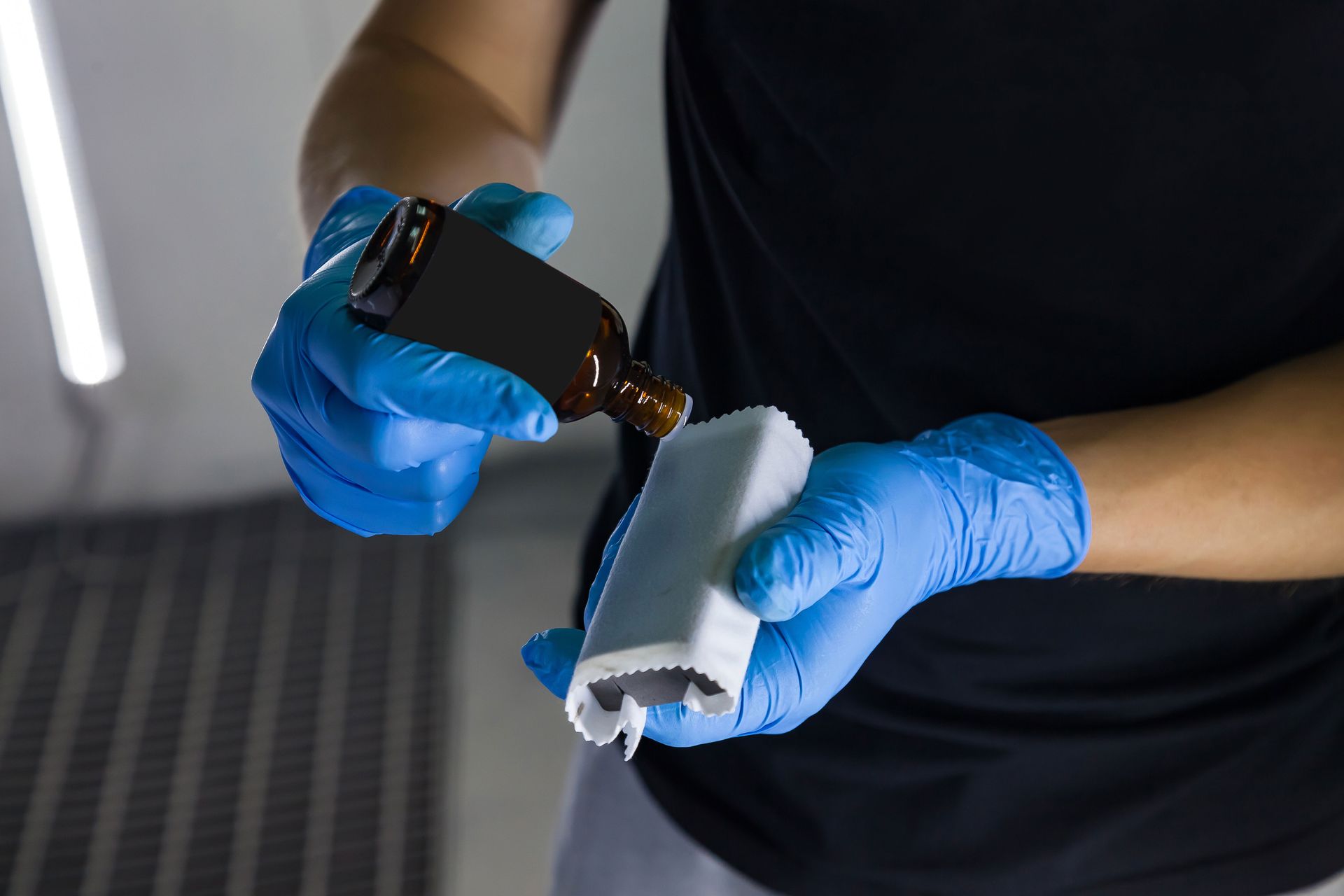
The Process of Applying Ceramic Coating on Paint Protection Film
Applying a ceramic coating on top of a paint protection film requires precision and careful attention to detail. It is a multi-step process that involves thorough preparation before the coating is evenly applied.
The first step is to ensure the vehicle's surface and the underlying paint protection film are free from any impurities, contaminants, or residue. This typically involves a meticulous cleaning process that removes dirt, dust, and oils using specialized detailing products. It is crucial to create a clean and smooth surface for optimal adhesion of the ceramic coating.
Once the surface is prepared, the ceramic coating is meticulously applied using a specific technique. Care must be taken to ensure even coverage and avoid any pooling or streaking that could result in an uneven finish. Professional detailers often use microfiber applicators or specialized pads to achieve uniform application.
After the initial application, a curing period is necessary for the ceramic coating to bond properly with the paint protection film. This curing time allows the coating to harden and create a durable protective layer. The duration of this process varies depending on the specific product used, but can range from a few hours to a few days.
Once cured, the ceramic coating provides long-lasting protection to both the paint protection film and the vehicle's underlying paintwork. It creates a hydrophobic surface that repels water, dirt, and contaminants, making it easier to maintain and keeping your vehicle looking glossy and protected.
Imagine spending an entire day meticulously applying ceramic coating to your vehicle's paint protection film. You follow each step diligently, ensuring perfect coverage and even application. After the curing process, you marvel at your car's enhanced appearance as raindrops bead up and slide off effortlessly during your next drive. The investment of time and effort pays off with not only an attractive aesthetic but also peace of mind knowing that your vehicle's paintwork is well-guarded against environmental hazards.
With an understanding of how ceramic coatings are applied on top of paint protection film, let's explore some additional considerations and limitations associated with this process.
Considerations and Limitations of Ceramic Coating on Paint Protection Film
Ceramic coating has gained popularity as a reliable solution for protecting vehicle paint from environmental and human-made contaminants. However, when it comes to applying ceramic coating on paint protection film (PPF), there are certain considerations and limitations to keep in mind.
Firstly, it's important to understand that ceramic coating can indeed be applied on top of PPF. The transparent nature of PPF allows the ceramic coating to bond effectively with the film, providing an additional layer of protection. This combination creates a synergistic effect, enhancing the durability and longevity of the PPF while further enhancing its resistance against minor scratches, UV rays, dirt, and more.
While the ceramic coating on PPF offers numerous benefits, it's crucial to be aware of a few limitations. One consideration is related to the application process itself. Applying ceramic coating on PPF requires careful preparation and attention to detail. The surface must be thoroughly cleaned and prepped prior to application to ensure proper bonding between the coating and the film. Any contaminants or residue left on the surface can compromise the adhesion of the coating, leading to potential issues down the line.
Additionally, it is essential to note that not all ceramic coatings are suitable for PPF. It is recommended to use a specific type of ceramic coating that is designed for clear bra applications. These coatings are formulated with features that make them compatible with PPF surfaces and ensure optimal performance.
Another limitation to consider is the potential for increased maintenance requirements. While ceramic coating on PPF provides exceptional protection against many contaminants, it is not invincible. The coating may still be susceptible to certain chemical cleaners or harsh environmental conditions that can compromise its integrity. It's important to follow the proper maintenance guidelines recommended by both the PPF manufacturer and the ceramic coating product to ensure long-lasting performance.
Think of the ceramic coating on PPF as adding an extra layer of armor to your car's defense system. Just like any armor, it needs to be properly cared for and maintained to keep it effective and intact.
Final Words
In conclusion, applying ceramic coating on paint protection film can offer enhanced protection and longevity for your vehicle's paintwork. However, it's crucial to understand the considerations and limitations involved. Proper preparation, using a coating formulated for PPF, and following recommended maintenance protocols are vital to ensuring successful results. By taking these factors into account, you can make informed decisions and enjoy the benefits of a well-protected and visually stunning vehicle.
Frequently Asked Questions
Can ceramic coating be applied on top of an existing layer of paint protection film?
Yes, a ceramic coating can be applied on top of an existing layer of paint protection film. The smooth and non-porous surface of the film provides an ideal base for the ceramic coating to bond and enhance its durability. Furthermore, studies have shown that combining paint protection film with a ceramic coating can provide even better resistance against UV rays and chemical contaminants, making it a beneficial combination for long-term paint protection.
How does ceramic coating affect the effectiveness of paint protection film?
Ceramic coating enhances the effectiveness of paint protection film by providing an additional layer of protection against UV rays, pollutants, and minor scratches. It creates a hydrophobic surface that helps repel water and dirt, making the film easier to clean. Furthermore, ceramic coating increases the longevity of the paint protection film, extending its lifespan and ensuring better overall performance. According to independent tests, cars with a combination of ceramic coating and paint protection film showed a significant reduction in swirl marks and fading compared to those without ceramic coating.
Is it necessary to ceramic coat paint protection film?
While ceramic coating paint protection film is not necessary, it does offer several benefits that make it worth considering. A ceramic coating can enhance the longevity of the film,
provide added protection against UV rays, and improve the gloss and appearance of the vehicle. Additionally, it can make cleaning easier by allowing dirt and contaminants to slide off more easily. According to a study by Detailing World, vehicles with ceramic coated paint protection film exhibited a significantly lower level of paint defects compared to those without coating. However, it ultimately depends on personal preference and budget constraints.
Does ceramic coating extend the lifespan of paint protection film?
Yes, ceramic coatings can definitely extend the lifespan of paint protection films. The ceramic coating acts as an additional layer of protection on top of the PPF, enhancing its resistance to UV rays, dirt, and environmental contaminants. Investing in ceramic coating for your PPF is a smart choice to prolong its durability and maintain a glossy finish.
Are there any downsides or potential risks to ceramic coating paint protection film?
While ceramic coating paint protection film offers numerous benefits, there are a few downsides and potential risks to consider. Firstly, the application process can be complex and requires proper training to ensure optimal results. Additionally, if the film is not properly maintained, it may develop stains or discoloration over time. It is also important to note that ceramic coatings are not scratch-proof and can still be damaged by sharp objects or excessive force.
